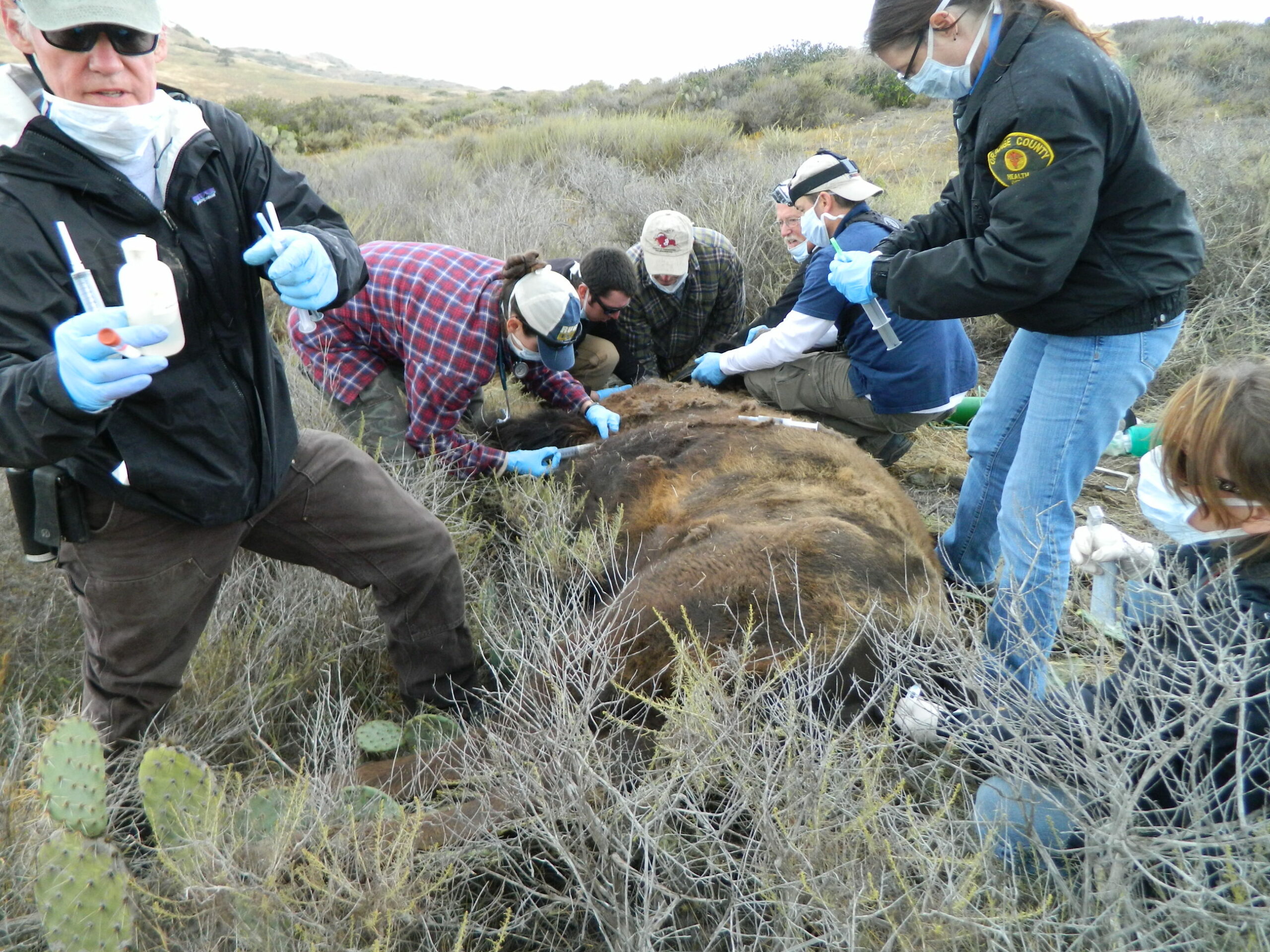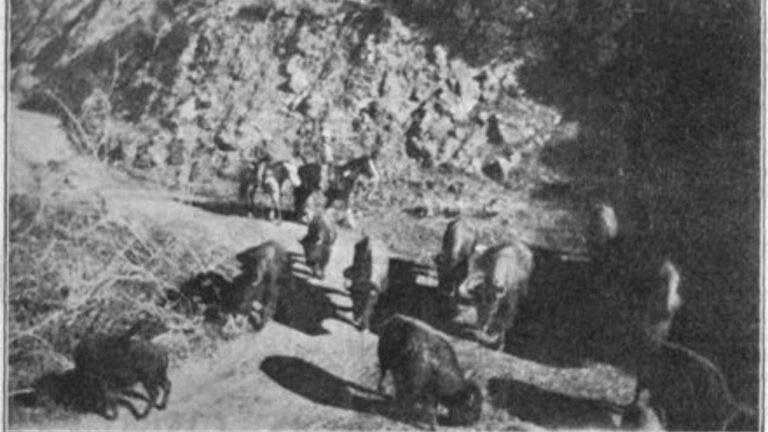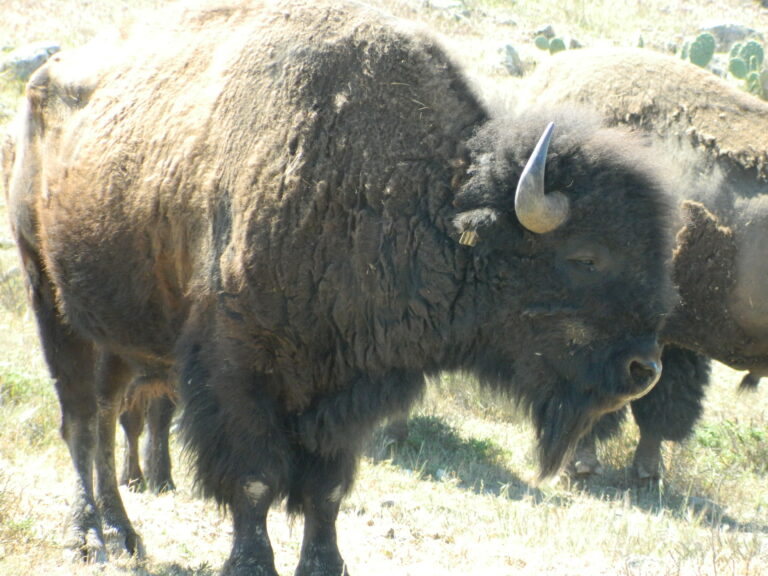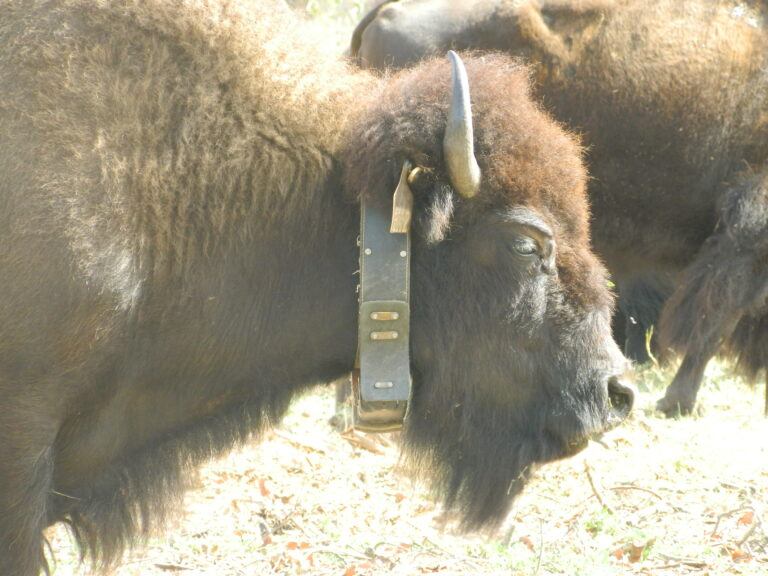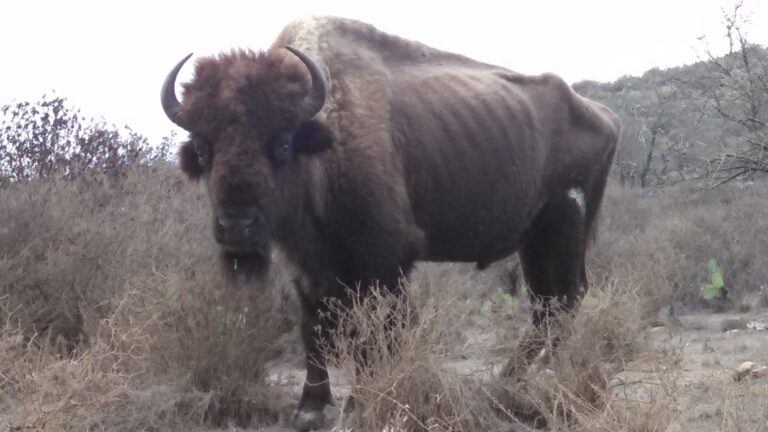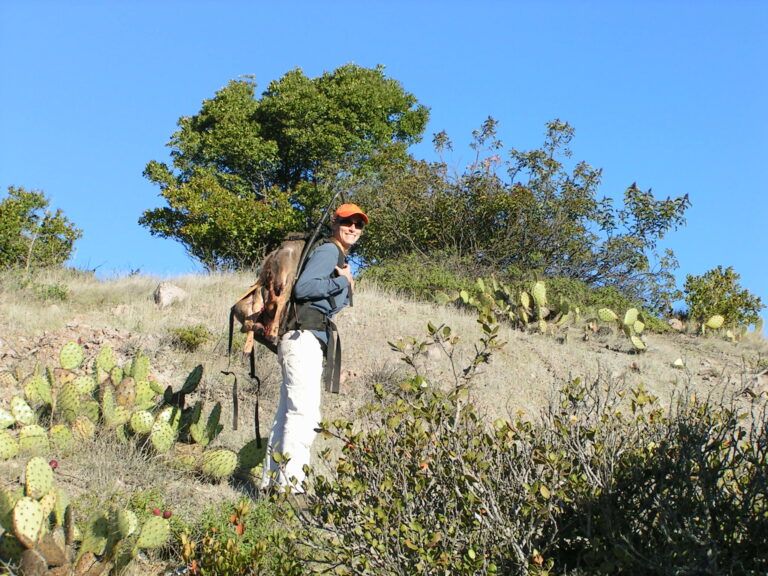Capturing and Collaring Bison on Catalina Island, California.
In 2014 we outfitted five Catalina Island bison cows with Global Positioning System (GPS) collars to support my thesis research through Cal State Fullerton. I coordinated a team of wildlife veterinarians to lead the capture and immobilization process with assistance from several of my Catalina Island Conservancy colleagues.
I had originally planned to publish this information in a scientific journal but decided to include it on my website to make it available in a more timely fashion. This is a technical article that includes the complete bison capture and immobilization procedure as it is written in Appendix A of my graduate thesis and is intended to support other researchers attempting to replicate the process.
Introduction
Five bison cows were selected to wear Iridium GPS collars (Advanced Telemetry Solutions) so that they could be located systematically in support of efforts to collect breeding behavior data and fecal samples.
The goal was to select individuals that were not commonly found together within the same family groups so that collectively locating the collars would provide real-time location data of all cows within the Catalina bison population.
The list was then narrowed down to include individuals that had not previously been marked or sampled (9059, 9060, 9061) or that had lost an ear tag (9056). After evaluating several potential capture approaches required to attach the collars, immobilization through the application of a sedative was deemed the optimal method.
The capture and immobilization efforts were conducted by a team of veterinarians, including Drs. T. Winston Vickers, Scott Weldy, and Kristi Krause, as well as several Conservancy staff, California State University Fullerton professor Dr. Paul Stapp, and a few volunteers.
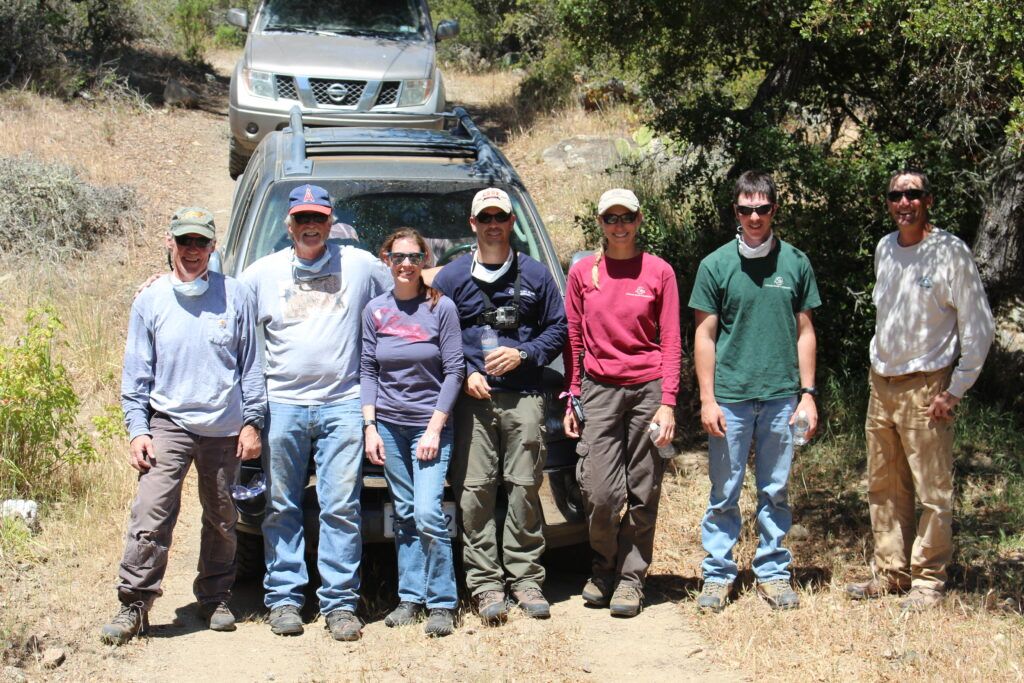
Dr. Pat Morris, a veterinarian from San Diego Zoo Global with extensive experience in immobilizing ungulates, collaborated on the planning portion of the captures but was not present in the field.
The initial capture and immobilization efforts (five events) were conducted on May 10-11, 2014, however, one individual (9056) was recaptured and immobilized again one year later on May 8, 2015, to replace her collar that had malfunctioned and dropped off prematurely.
Due to the unpredictable nature of wildlife capture and immobilization, two of the five initial capture events were conducted on individuals that had been lured into holding corrals located in Cape Canyon. Under these somewhat controlled conditions, the capture crew was able to adjust drug dosages, monitor the behavior of the treated individual in response to the sedative, document the response of other bison within the corrals, and isolate individuals if necessary.
Methods
An induction cocktail of thiafentanil oxalate (A-3080) and medetomidine (Wildlife Pharmaceuticals, Fort Collins CO) was used as the primary immobilization drugs and was delivered intramuscularly (IM) in the lateral or caudal thigh via a CO2 powered dart rifle using 1-ml or 1.5-ml barbed darts with a tri-port discharge, a gel collar and a 2.54-cm needle (Pneu-Dart®, Williamsport, PA).
Partially sedated animals were further injected with additional medetomidine and/or ketamine using a hand-held syringe. Each individual also received 1.2 million units of Procaine Penicillin G – antibiotic (Dominion Laboratories, Winnipeg, MB, Canada), 2.8 g of Naxcel – bactericidal (Zoetis Canada, Kirkland QC, Canada), 160 mg Ivermectin – anti-parasite, 400 mg Banamine – non-steroidal anti-inflammatory (Intervet/Merck Animal Health, Madison, NJ), and 5 mg Clostridium CandD/Tetanus toxoid combination – antibacterial and tetanus protection (Professional Biological Company, Denver, CO).
Thiafentanil is a potent opiate that, at the time of my study, was listed as a Schedule I or Class I drug, primarily due to severe human safety concerns and potential misuse. To prevent human exposure during handling, all drug mixing procedures, as well as dart loading and retrieval, were completed by authorized veterinarians wearing nitrile gloves, safety glasses, face shields, surgical masks, and rain jackets.
All other individuals participating in the captures were outfitted with nitrile gloves, safety glasses, and surgical masks. As per FDA protocol, the primary drug reversal agents for thiafentanil (naltrexone) and medetomidine (atipamezole) were kept on hand in case of human exposure, and local medical response personnel were notified of our activities and location.
Corral-Based Captures (May 10, 2014)
Capture 1 – Bison cow #9059, aged 4 years, weight 350–365 kg.
Based on the manufacturer’s recommended dosage for an approximately 400 kg bison, an initial sedative of thiafentanil (4 mg) and medetomidine (4 mg) was delivered at 10:10, and signs of the sedative taking effect (slight stumbling) occurred within 4 minutes.
Cow 9059 laid down at 10:16 but returned to her feet and began running frantically around the corral. Other bison within the corral began to chase and harass her, so we isolated her in her own corral at 10:22, and she continued to run in a panicked fashion for 28 minutes. She finally laid down in a sternal position at 10:50 but remained fully awake and breathing heavily.
A second dart loaded with ketamine (600 mg) and medetomidine (4 mg) was delivered by Dr. Weldy at 11:01. The cow shifted onto her left side but remained responsive and awake. A blanket was placed over her eyes and ears at 11:14, and an additional dose of ketamine (400 mg) was injected intravenously (IV) into the coccygeal vein at the base of her tail using a hand-held syringe.
Within 20 minutes, blood samples were collected, penicillin, Naxcel, ivermectin, Banamine, and Clostridium CandD/tetanus toxoid combination medications were delivered in the doses mentioned above, and a GPS collar and ear tag were attached.
Reversal agents naltrexone (200 mg – IV and IM) and atipamezole (40 mg – IM) were delivered at 11:34, and 9059 was back on her feet and running by 11:36. The total time from initial dart to recovery was 1 hour 26 minutes.
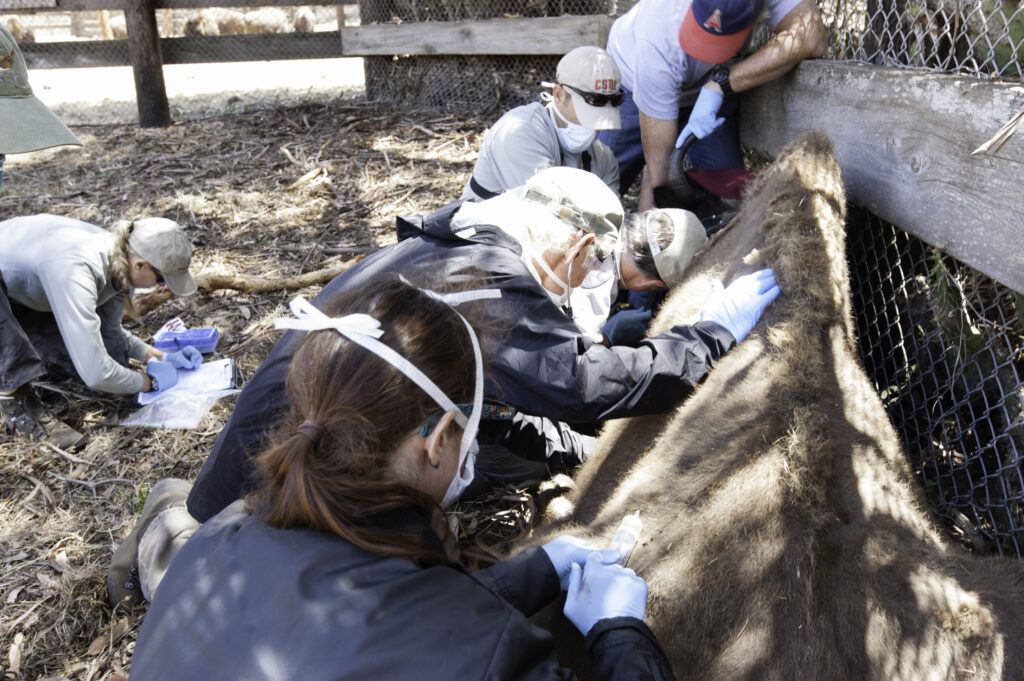
Capture 2 – Bison cow #9032, aged 4-5 years, weight 340-360 kg.
Due to the delayed effect of the sedative observed during the first capture event, the dose was increased. An initial sedative of thiafentanil (6 mg) and medetomidine (6 mg) was delivered at 11:55. Cow 9032 laid down in the sternal position at 12:03 but remained awake. A blanket was placed over her head, and a dose of ketamine (400 mg) was injected IV into the coccygeal vein to further her sedation at 12:11.
All processing (blood samples, additional medications, collar fitting, and eat tag application) was completed in less than 13 minutes, and the reversal agents naltrexone (300 mg) and atipamezole (30 mg) were delivered at 12:24.
The cow was up and running within 1 minute of the reversal delivery, and the whole process (initial dart to recovery) took 30 minutes.
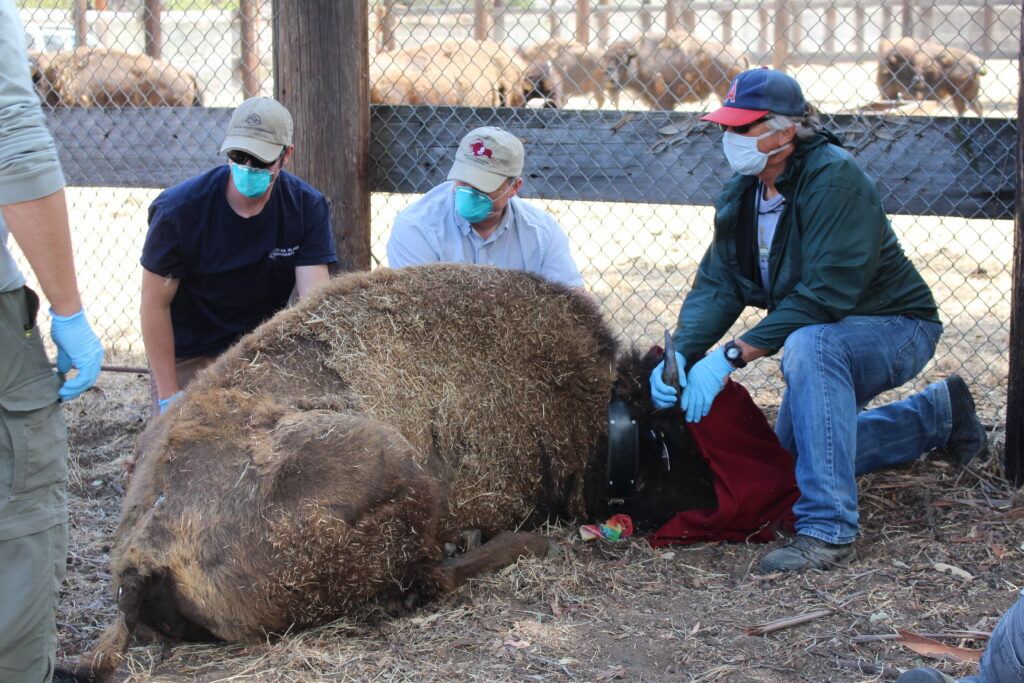
Field-Based Captures (May 10-11, 2014)
Capture 3 – Bison cow #9060, aged 8 years, weight 408-455 kg.
The cow received an initial sedative thiafentanil (10 mg) and medetomidine (10 mg) at 15:17 on May 10, 2014. Within two minutes, she began to stumble and then began walking away from the rest of the herd. She eventually laid down on her left side in a cactus patch approximately 180 m away from the herd at 15:25.
A supplementary dose of ketamine (400 mg) was administered IV in the coccygeal vein at 15:30, and to relieve the pressure on the rumen, we rolled her over onto her right side using ropes at 15:35. An additional dose of ketamine (150 mg) and medetomidine (2 mg) was administered IV at 15:37 and all processing (blood samples, additional medications, collar fitting, and ear tag application) was completed within seven minutes.
Due to severe bloating, Dr. Vickers performed an intra-ruminal injection using a 14-gauge trochar to relieve the pressure, and the reversal drugs naltrexone (500 mg) and atipamezole (60 mg) were administered at 15:46.
She returned to her feet at 15:48, returned to the herd, and led them up and over a nearby hill. The total time from dart to recovery was 31 minutes.

Capture 4 – Bison cow #9061, aged 1 year, weight 450 kg.
The cow received a sedative of thiafentanil (10 mg) and medetomidine (10 mg) at 08:43 on May 11, 2024, via dart, and was lying down in a sternal position near the road by 08:47. The herd gathered around her very inquisitively and nudged her several times to try to get her back on her feet.
She laid down fully on her right side 10 minutes later, and we were able to move the herd away and encircle her with vehicles. We immediately moved her back into a sternal position to reduce the chance of bloating, completed processing, and administered the reversal drugs naltrexone (500 mg) and atipamezole (50 mg) by 09:09.
She was back up and running with the herd within 2 minutes, and the total time from initial dart to recovery was 28 minutes.
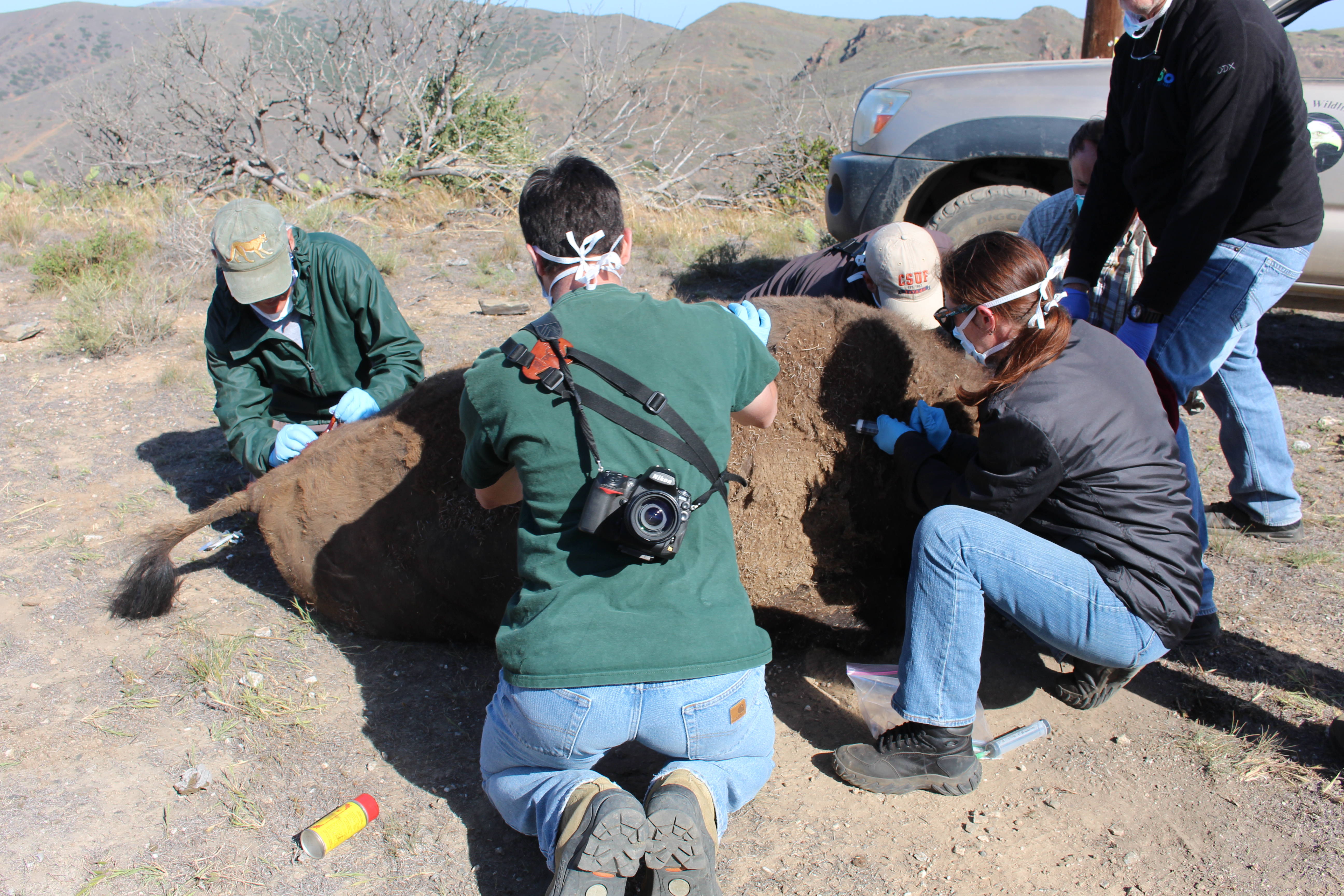
Capture 5 – Bison cow #9056, aged 4 years, weight 408-430 kg.
The cow received an initial sedative of thiafentanil (10 mg) and medetomidine (10 mg) at 11:29 and then began running down the road. We pursued her in vehicles and found her lying on the road after five minutes of driving.
She was still responsive, so we covered her eyes and ears with a blanket and administered another dose of medetomidine (10 mg) IM followed by ketamine (400 mg) IV into the coccygeal vein at the base of her tail at 11:41.
We rolled her into a sternal position, completed all processing activities, and applied the reversal drugs naltrexone (500 mg) and atipamezole (100 mg) by 11:56.
She was back on her feet and running back to the herd at 11:57. The total time from initial dart to recovery was 28 minutes.
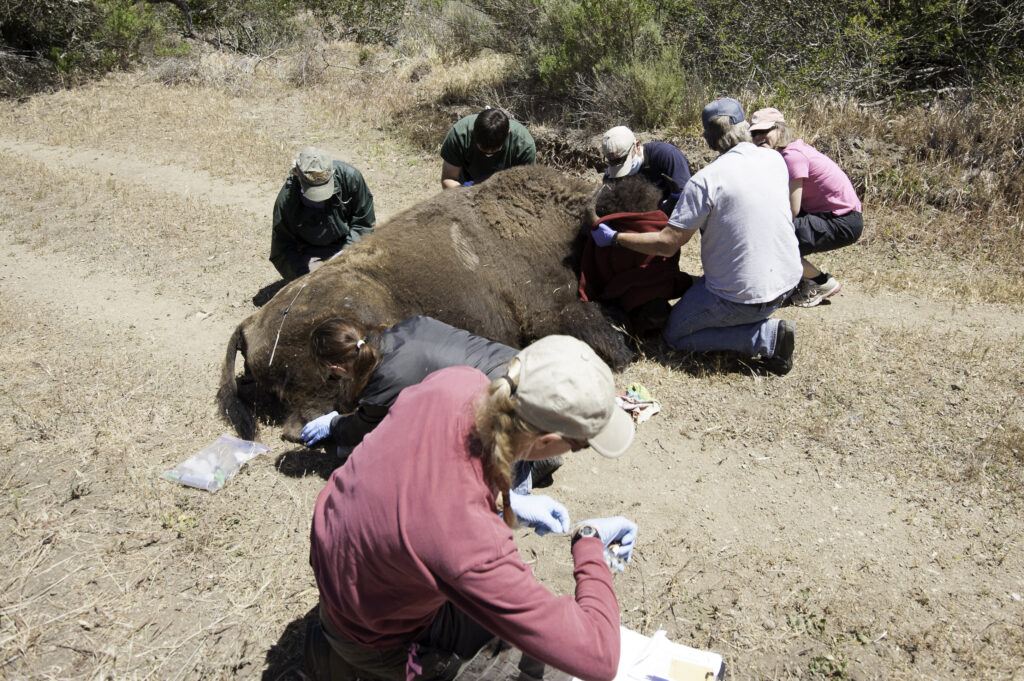
Field Recapture and Re-collaring (May 8, 2015)
Capture 6 – Bison cow #9056, aged 5 years, weight 408-430 kg.
An initial dose of (10mg thiafentanil, 10 mg medetomidine) was delivered via dart at 10:39. Within a few minutes, she began to stumble slightly and trotted off away from the herd. At 10:47, after walking approximately 200 m, she laid down along a hillside ad attempted to roll herself against the slope of the hill.
At 10:52, we were able to approach her and cover her head with a blanket, and at 10:57, a 500-mg dose of ketamine was injected IV into the coccygeal vein at the base of her tail. We rolled her onto her right side, and she immediately stopped breathing due to the position/weight on her diaphragm and the induction agents but maintained a pulse.
Dr. Weldy reached his hands into her mouth/pharynx, cleared food and debris from her caudal pharynx, and slid his fingers through her glottis and into her tracheal lumen as a guide. He then threaded a 57-mm cuffed endotracheal tube into her trachea and inflated the cuff.
She was too long in the caudal pharynx to use the laryngeal scope we had brought, so Dr. Weldy had to intubate her blindly by feel. Once she was intubated, Dr. Weldy performed mouth-to-endotracheal tube ventilation until Dr. Vickers brought the oxygen line.
Dr. Weldy then attached the free-flowing oxygen line direct from the metered bottle to the tube to inflate her lungs and then removed it to allow passive expiration to expel the spent air from her lungs. This process was repeated until she began spontaneous respiration under her own accord.
During this activity, the cow also received a dose of Dopram (20 ml) IV to help stimulate breathing. Once stable, we completed all processing activities. Oxygen was removed at 11:11, reversal agents naltrexone (500 mg) and atipamezole (100 mg) were applied at 11:13, and the cow was back on her feet by 11:16.
The total time from initial dart to recovery was 37 minutes.
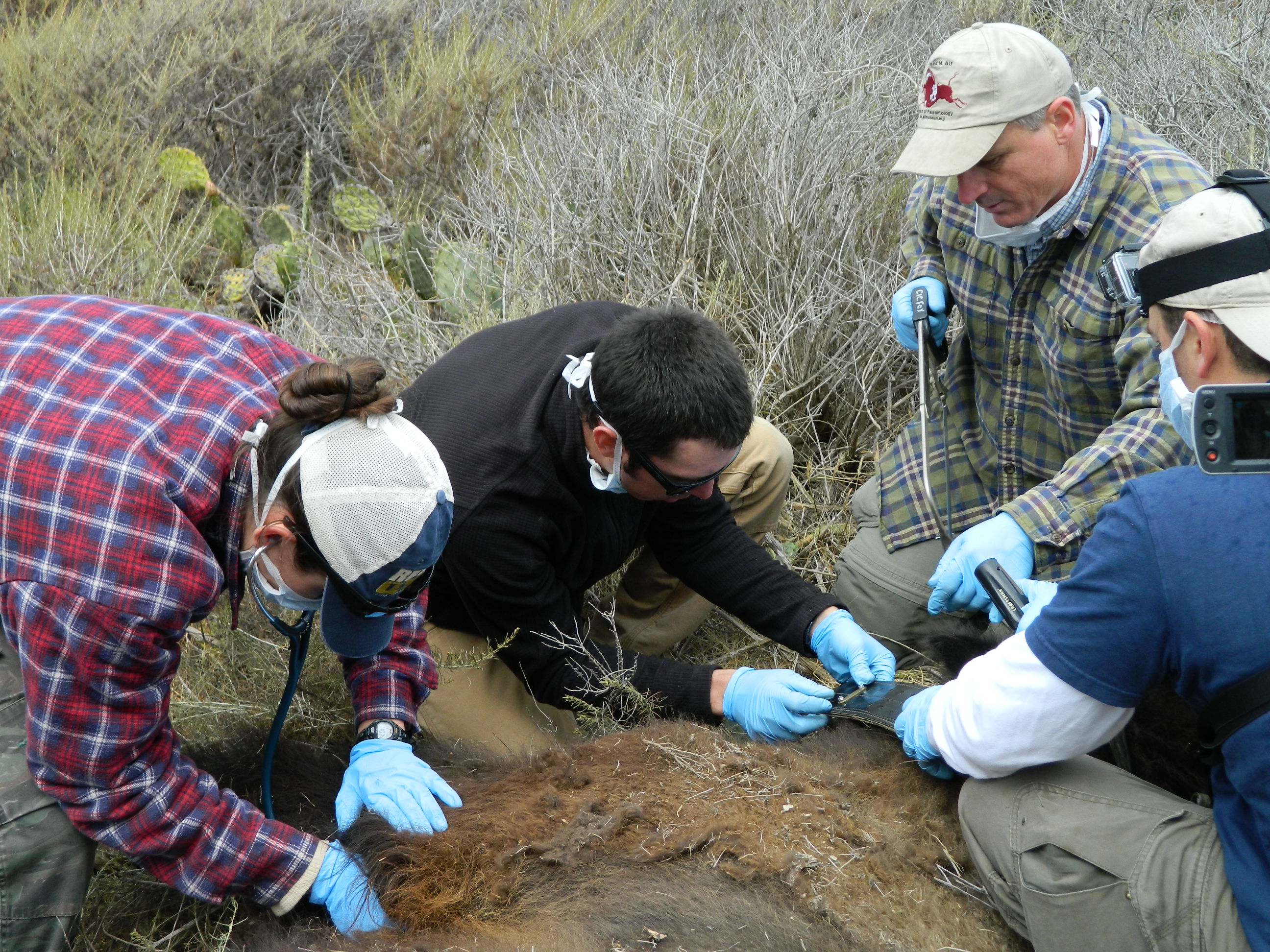
Bison Sedation & Collaring Gallery
Thank you for visiting WildlifeDetections.com. Check back often for new content or subscribe to my newsletter to receive updates on new articles, and if you have enjoyed this post, please don’t hesitate to share.

